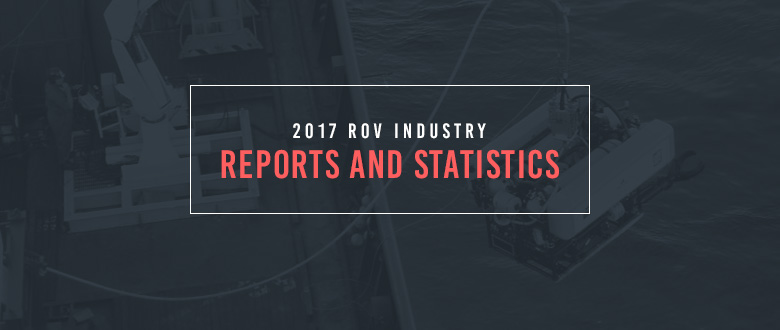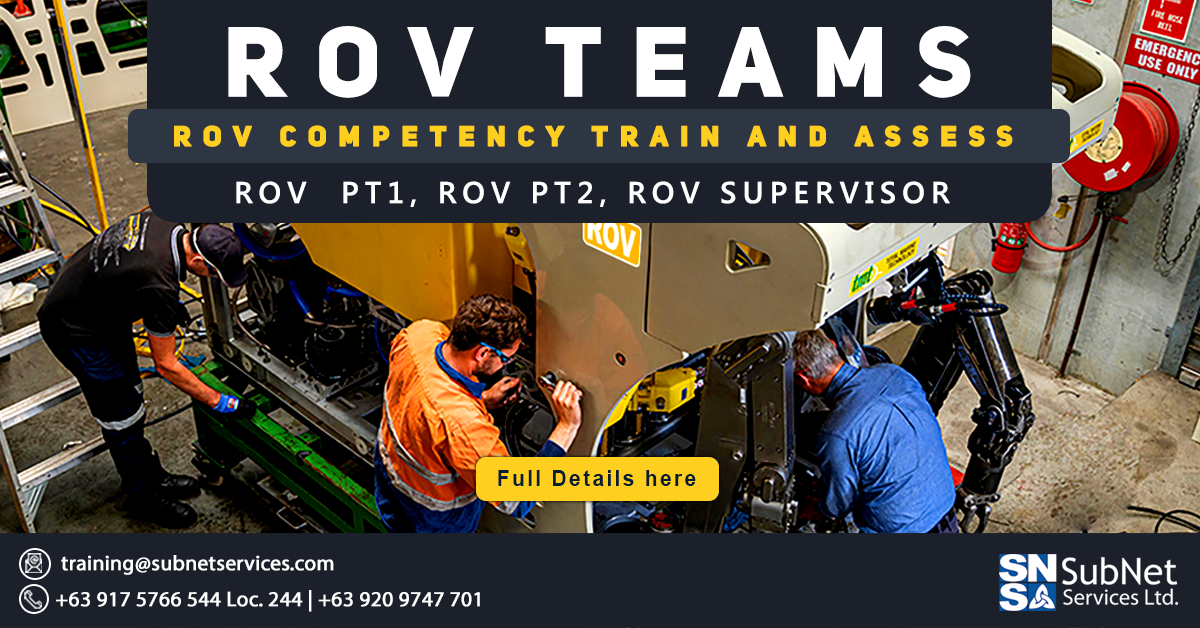2017 ROV Industry Reports and Statistics
We’re on the final month of 2017! The new year is incredibly fast approaching. Our 2018 training schedule has already been set. You can book your preferred course anytime. But before we fully look forward to the upcoming year, let’s take a quick look back at what 2017 had been especially for the industry of remotely operated vehicle (ROV).
A recent study found that underwater exploration robots would represent an impressive compound annual growth rate (CAGR) throughout 2017 to 2025 period. These underwater exploration robots are equipped with sensors that help perform predetermined missions such as collecting high quality images underwater or gathering environmental data such as temperature, depth, salinity, etc. In terms of type, the underwater exploration robot market can be segmented into ROV robot, autonomous underwater vehicle (AUV) robot, or unmanned underwater vehicles (UUV). Read more at: www.satprnews.com
In this post, we have compiled some of the industry reports and statistics about ROVs released this year that are worth taking note of.
- According to the report “Unmanned Underwater Vehicles Market by Type (Remotely Operated Vehicle and Autonomous Underwater Vehicle) released in July, ROV and AUV Market by Application, Product, Propulsion System, Payload, and Region – Global Forecasts to 2022”, the UUV market was estimated at USD 2.69 billion in 2017 and was projected to reach USD 5.20 billion by 2022, at a CAGR of 14.07% from 2017 to 2022. Based on application, the commercial exploration segment of the ROV market was expected to witness the highest growth during the forecast period. The growth of the market could be attributed to the rising number of deep-water offshore oil and gas production activities and increasing maritime security threats. Read more at: www.marketsandmarkets.com
- Meanwhile in August, the International Marine Contractors Association (IMCA) published a statistics on personnel working on ROVs, as well as on the types of ROV in operation from February 2010 to August 2016 period. IMCA’s technical director Richard Benzie stated that there had been a clear fall in the number of ROV personnel at work, and the number of vehicles in use since 2015 due to current economic conditions. IRM work has seen the greatest relative reduction but drill support work and construction have also fallen. Cable laying and the underlying offshore renewable energy activity, had shown a continued increase in recent years. Nevertheless, class III ROVs continued to dominate accounting for nearly 83% ROVs deployed offshore in February 2016 (the first of two survey periods) and 82% in August 2016 period. Read more at: subseaworldnews.com
- The Westwood Global Energy reported in September that the work-class ROVs (WROVs) was starting to emerge from a cyclical downturn that had seen activity fall 36% and expenditure nearly-halved. The market was now finally expected to see a positive trajectory highlighted in the World ROV Operations Market Forecast 2018-2022, driven by drill-support, field construction, and inspection, repair, and maintenance (IMR) activities offshore. Read more at: www.douglas-westwood.com
- In October, the Transparency Market Research (TMR) released a report saying that the global AUV and ROV market was estimated to expand at an impressive 18.2% CAGR vis-a-vis for the forecast period between 2017 and 2025. At this pace, the market would reach a valuation of USD 9117.01 mn by the end of 2025 increasing from USD 2065.56 mn in 2016. On the basis of product, ROV segment holds the leading market share over the AUV product segment. Geography-wise, the Middle East and Africa holds dominance accounting for the leading revenue contribution to the overall market. Read more at: www.marketwatch.com
- Finally last month, the “Global ROV Market 2017-2025 by Industry Vertical, Application, Hardware Component, Vehicle Type, Propulsion System and Region” reported that the global total Capex (capital expenditure) of ROVs in 2025 will advance to $5.15 billion, driven by the substantial adoption of ROVs for drilling support, construction support, as well as IRM activities. Read more at: www.military-technologies.net
ROV Training at SubNet Services
Here in the Philippines, SubNet Services is the first company to provide ROV training courses. If you are planning to book any of our ROV training courses, you have four easy ways to do so. In case you want to know more about our ROV training, you can read this article further or take a comprehensive look at the ROV industry first.
Interested to know what it feels like to be working in the ROV industry? Read more on the perspective of a marine engineer working in an ROV company. You may also Contact or Email us for any inquiries or assistance.
Be trained and internationally certified!
Only here at SubNet Services.



